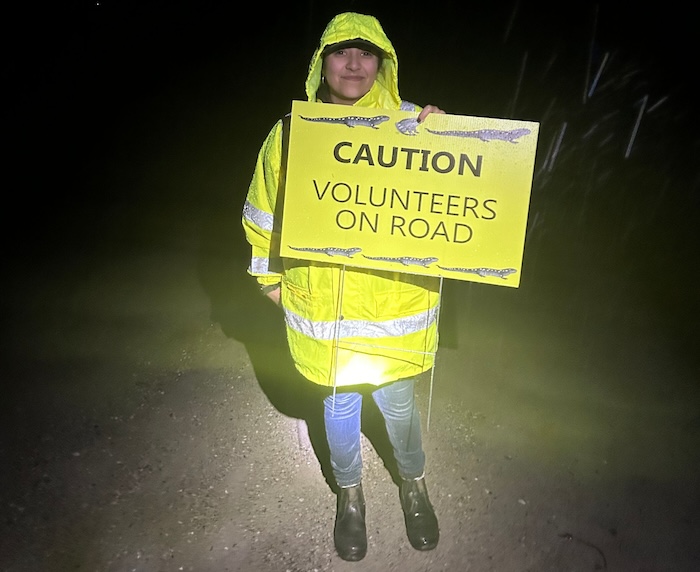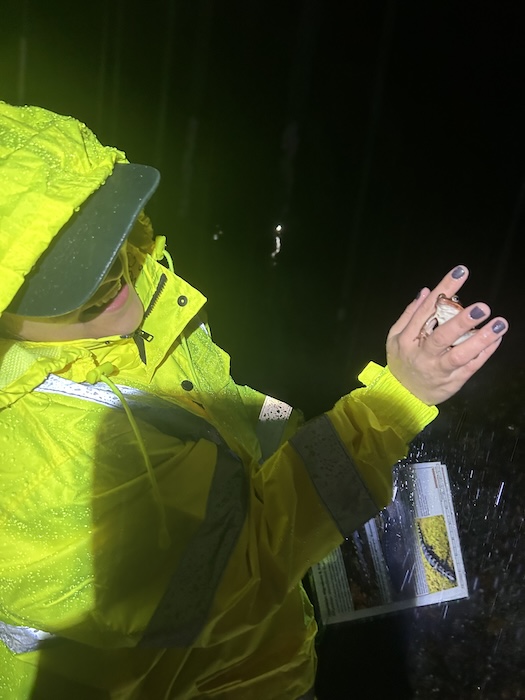Nadia Azizi, who lives in Beacon, is the outreach and events coordinator for the Hudson Highlands Land Trust. She leads volunteers who carry amphibians across busy roads on rainy nights to reach wetlands to mate.
Do the migrations change from year to year?
Yes. Last year we saw movement in late February and it continued into the first week of May. We had a real winter this year and, with those chillier nights, rainfall becomes less predictable. We have 27 volunteers, and they’ll be geared up and ready to go and the rain in the forecast doesn’t come. You have to be flexible and play the long game. So far this year we’ve saved over 600 amphibians. We’re expecting more rainfall later this week but because it’s been chillier, the migrations have been slowing.

When conditions are right, it’s known as a “big night.” What are the conditions?
You want consistent rainfall though a couple days of warmer nights above 40 degrees, and then a warm, rainy night. It doesn’t matter if it’s windy or stormy, there will still be crossings.
It’s dark and raining, and you’re in the middle of the road scooping up frogs while cars drive toward you. Why do it?
Amphibians are biological indicators. They tell you about an ecosystem’s health. And whether we’re looking at vernal pools [wetlands that appear in the spring but evaporate] or wetlands, they’re valuable habitats for wildlife. They have lots of benefits, especially regarding climate change.
Two summers ago, we experienced heavy rainfall that caused flooding. Healthy wetlands and vernal pools collect stormwater and prevent it from overflowing into roadways and homes. When wetlands get paved over, it’s destructive to wildlife and human habitats. There are thousands of vernal pools in New York and a strong concentration of them are in the Hudson Valley. When we collect data during these migrations, it gives the state DEC [Department of Environmental Conservation] a good idea where these pools are, how they’re doing and what protections they need.
How did you end up at the land trust?
My background is in food business management. I attended the Culinary Institute of America in Hyde Park and worked at Marbled Meat Shop in Philipstown for two years. I got to know the former board chair of HHLT, who introduced me to the executive director, Katrina Shindledecker, and the opportunity presented itself: They were looking for an executive assistant and a volunteer coordinator, and I was ready to shift career paths and move into the nonprofit world.
How can people help with crossings?
We’re just a hub of a much larger project. I recommend visiting the DEC website, which has a page about local road crossings [see dub.sh/big-night]. We have volunteers this year coming from lower Westchester County, which is quite a hike. We welcome anyone who wants to help, but you shouldn’t have to travel far. The website also has resources if you want to help on your own, without being part of a group.


